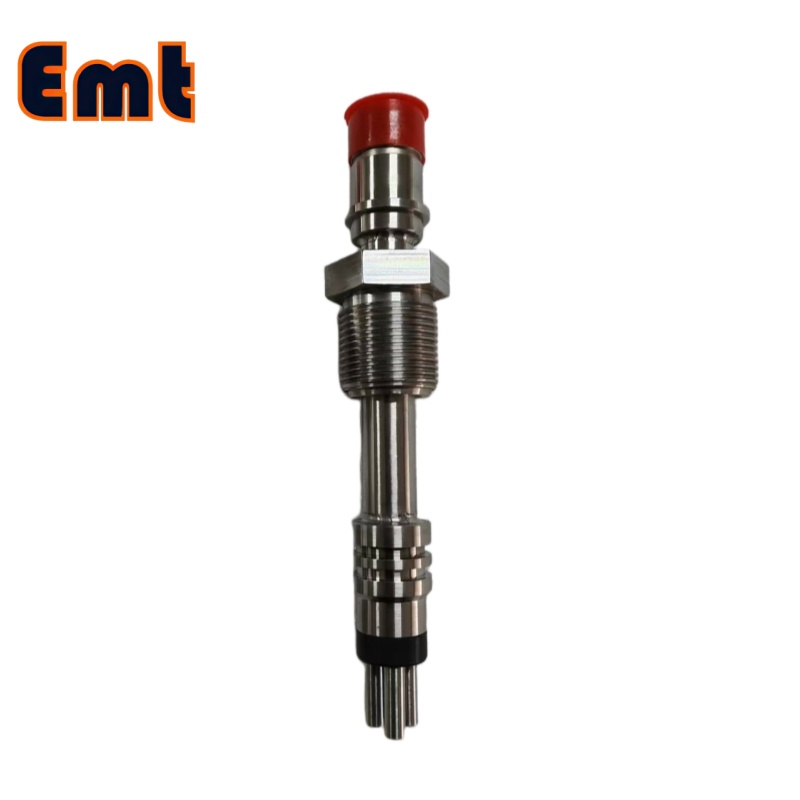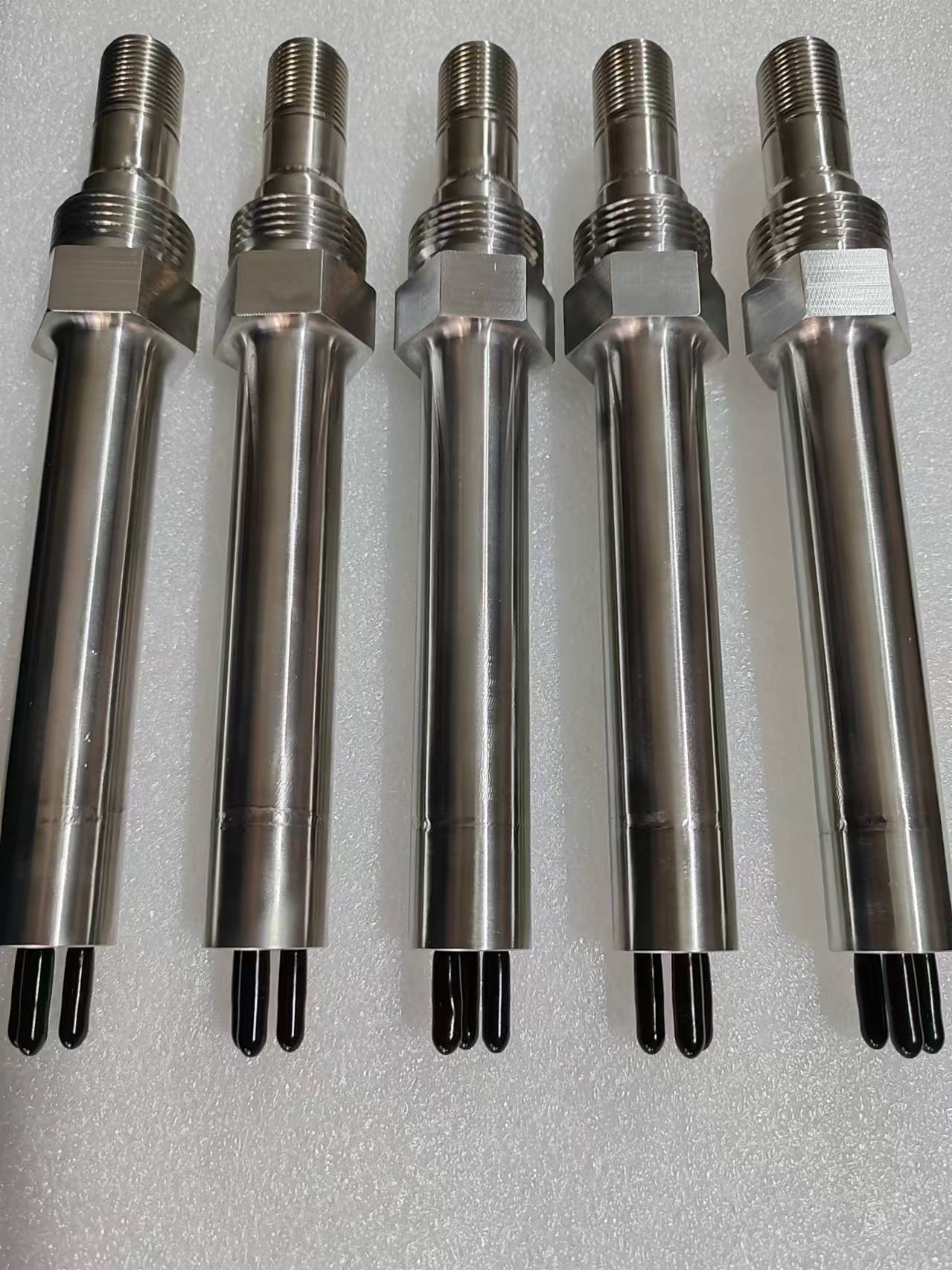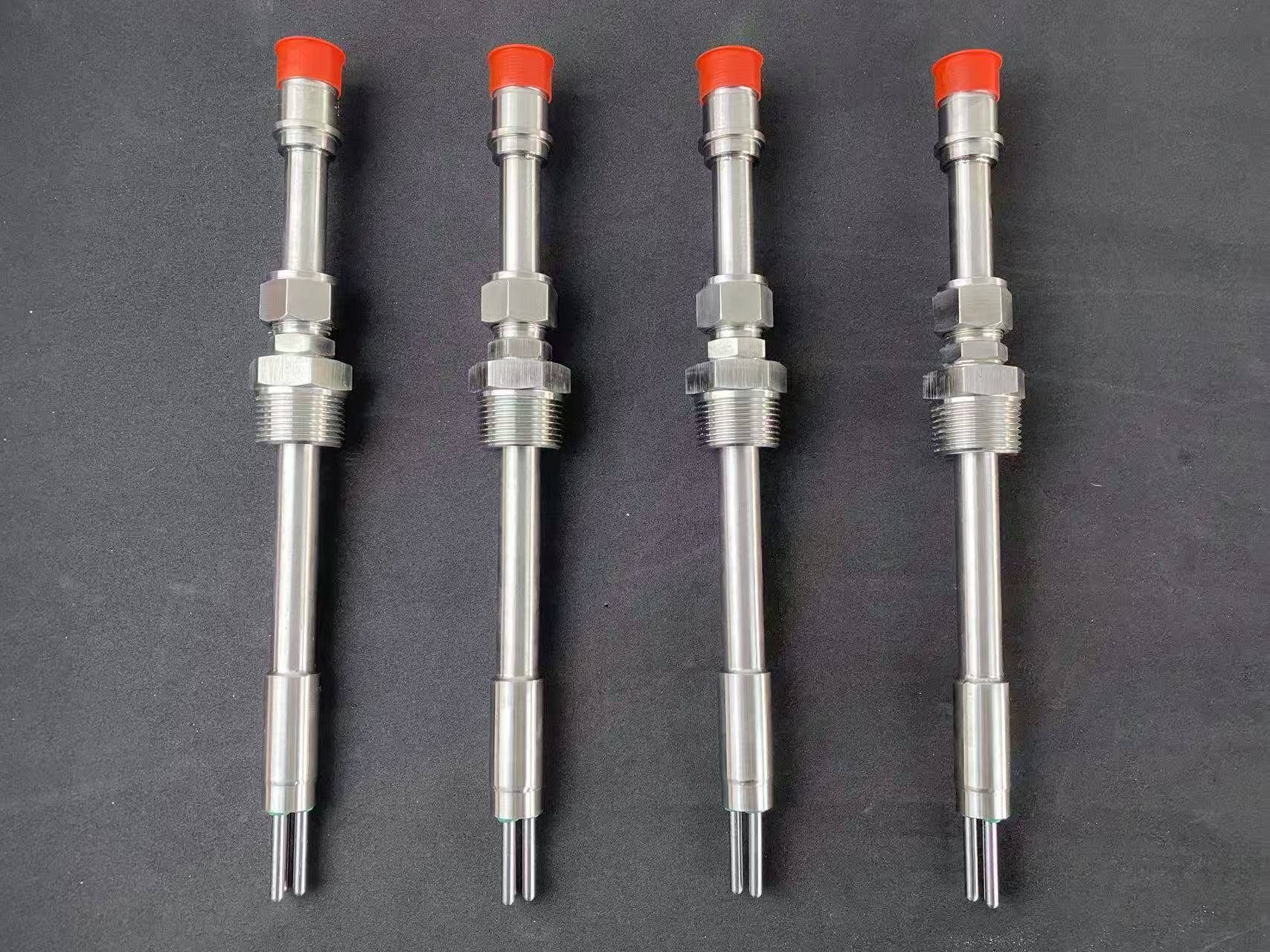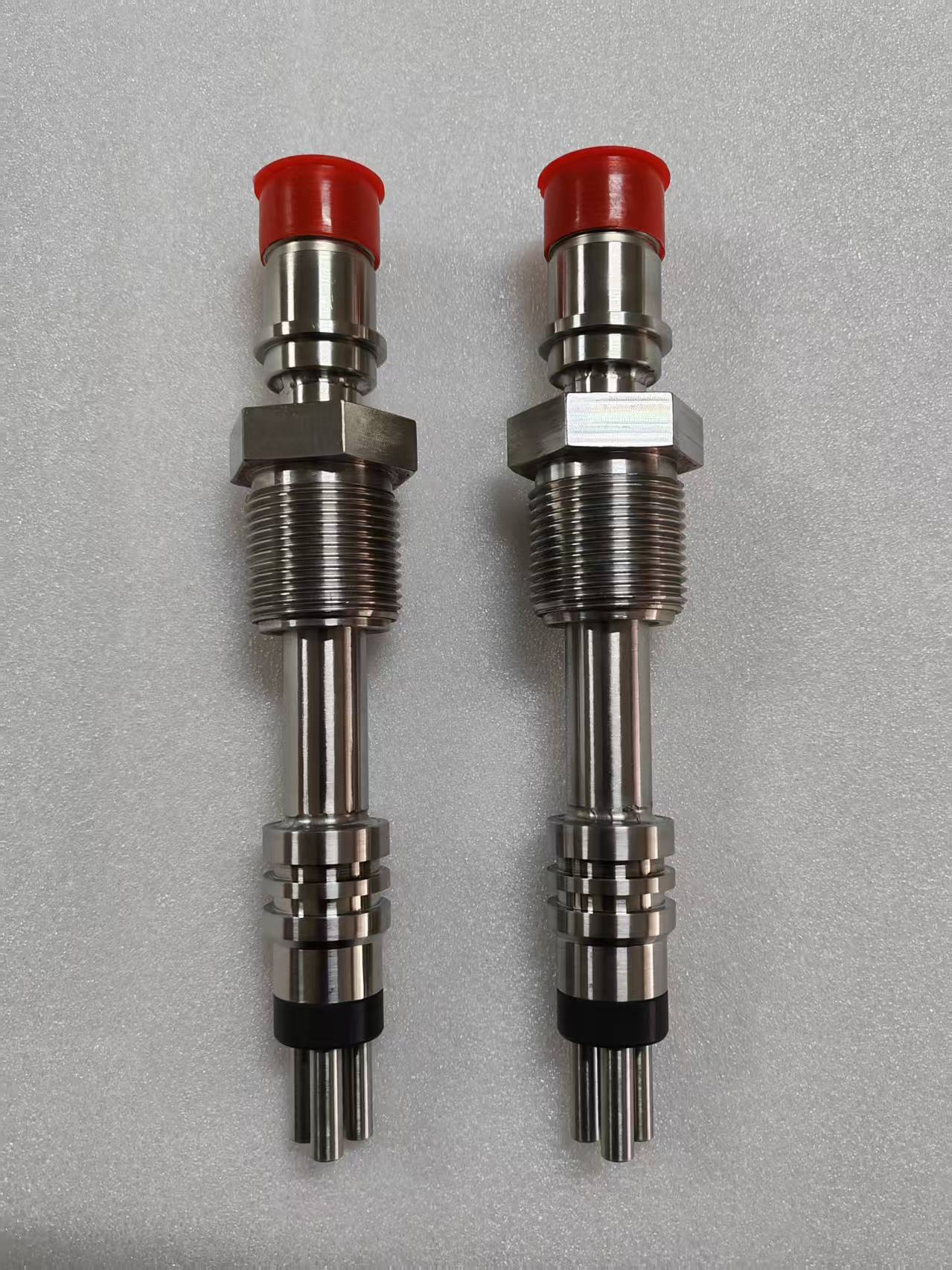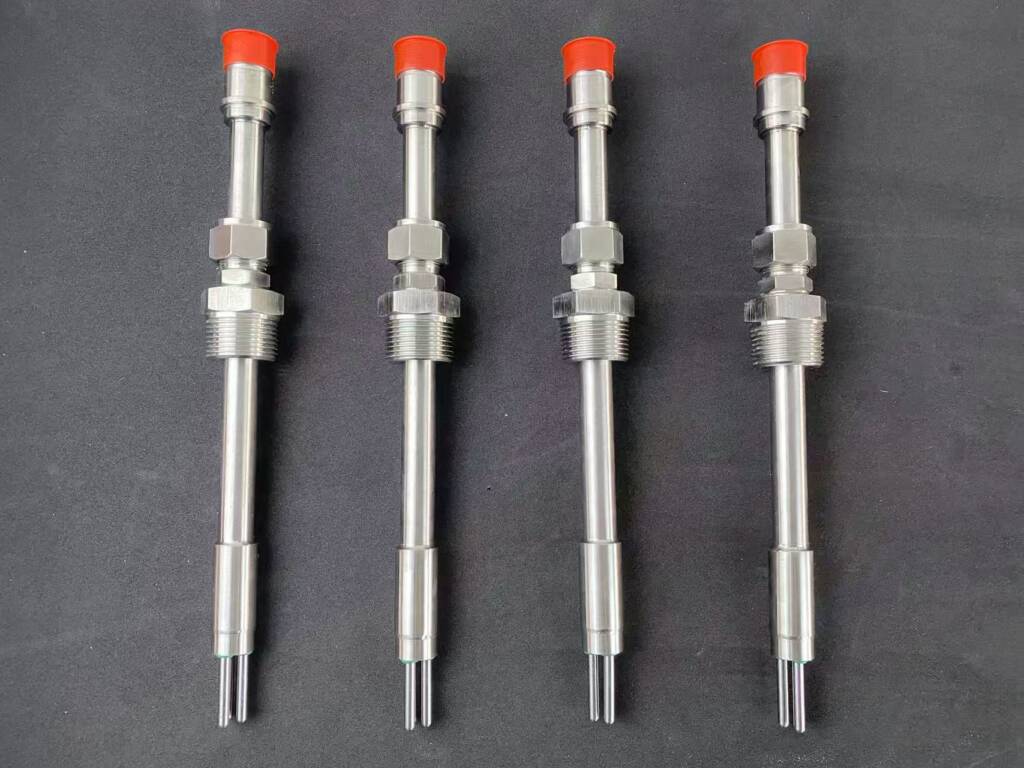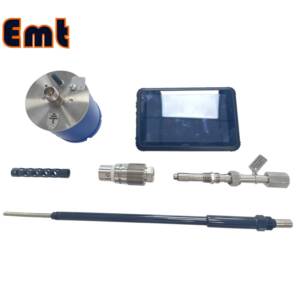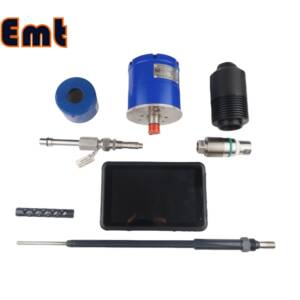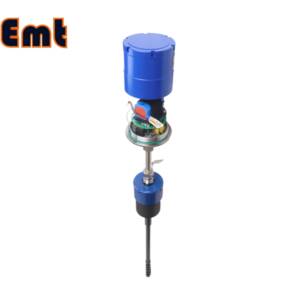Description
This High Sensitivity LPR Corrosion Probe employs two identical electrodes, which are mounted at the end of the probe by threaded, insulated, glass-sealed studs. Specifically, the glass seals provide high-pressure integrity. Furthermore, the probe is sealed into the hollow plug of the access fitting with a ceramic-filled Teflon seal.
In most cases, two-electrode probes are suitable for the majority of problems where LPR techniques are applicable. Consequently, major companies worldwide use LPR probes to measure corrosion in waterfloods, cooling water loops, and other aqueous systems. Moreover, these probes help provide direct control of inhibitor addition, ensuring optimum economy and corrosion protection.
Features of Corrosion Probe
- Replaceable Electrodes: Comes with two easily replaceable electrodes
- Mounting: Adjustable 3/4″ NPT connection
- Temperature Rating: Up to 300°F (150°C)
- Pressure Rating: Withstands up to 500 PSI (3.4 MPa)
- Electrode Seal Material:
- Glass-reinforced epoxy with Viton seals
- Glass with Viton seals
- Fill Material: Durable epoxy
- Body Material: Corrosion-resistant stainless steel
The EMT Linear Polarization Resistance (LPR) Corrosion Probe is built with a rugged design, making it well-suited for industrial applications, particularly in bypass racks where removal under pressure is not necessary. It features two identical, replaceable electrodes mounted at the probe’s end using threaded, insulated studs. This two-electrode configuration is suitable for most applications where LPR techniques are effective.
Leading companies worldwide trust LPR probes to monitor corrosion in water floods, cooling water loops, and various aqueous systems. When paired with solution resistance-compensating instruments—such as the LPR RDC, Aquamate, or LPR Instrument—these probes effectively operate even in low-conductivity environments. They also play a key role in optimizing the use of corrosion inhibitors, ensuring both effective protection and cost efficiency.
Principle of Operation
- Linear Polarization Resistance is based on applying a small, near-instantaneous DC voltage (typically ±10–20 mV) around the metal’s open-circuit potential.
- The resulting current response is measured.
- The slope of this voltage-current curve (ΔE/ΔI) gives the polarization resistance (Rp).
- Corrosion rate is inversely proportional to Rp:
Advantages of LPR Corrosion Probe
- Real-time Monitoring: Immediate feedback on corrosion rate.
- Non-destructive: Small perturbations that don’t significantly affect the system.
- Sensitive: Detects small changes in corrosion behavior.
Limitations of Corrosion Probe
- Only valid for uniform corrosion: Localized corrosion (pitting, crevice) is harder to detect.
- Environmental Sensitivity: Highly turbulent flow or fluctuating chemical conditions can skew results.
- Calibration Needed: Accurate knowledge of Tafel slopes and B constant is necessary.
- Temperature Effects: Electrochemical behavior changes with temperature, affecting measurements.


